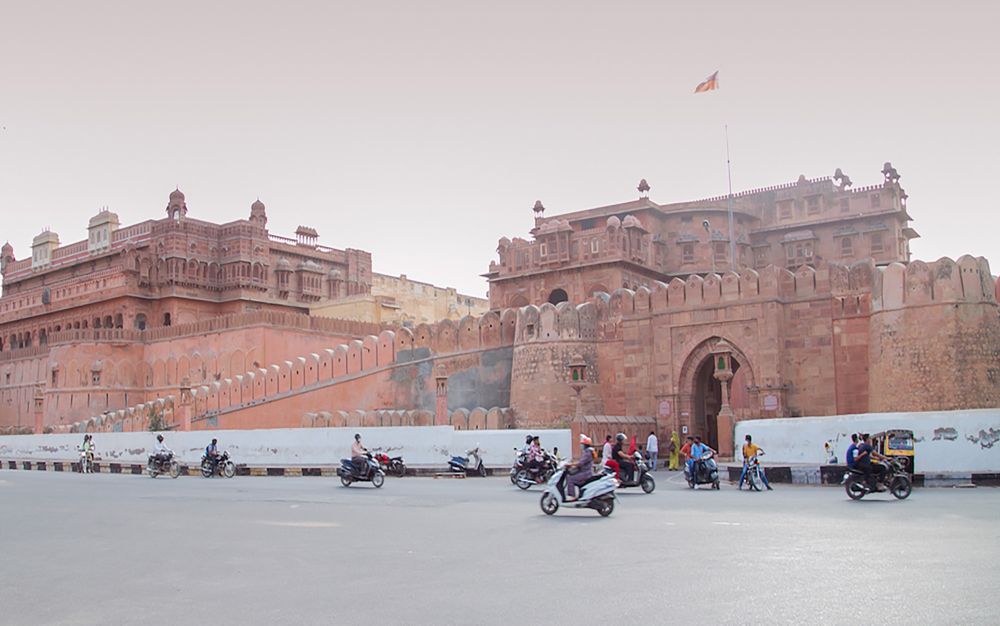

Junagarh Fort stands as a testament to the architectural prowess and historical significance of Bikaner, Rajasthan. Over the years, this fort has become an emblem of the city's heritage and a major draw for history enthusiasts, architecture lovers, and tourists from around the globe.
Built in 1594 by Raja Rai Singh, a general in the army of the Mughal emperor Akbar, Junagarh Fort is one of the few forts in India that has never been conquered. Its original name was Chintamani and was later renamed Junagarh or "Old Fort" in the early 20th century when the ruling family moved to Lalgarh Palace outside the fort limits. The fort complex comprises palaces, courtyards, and temples, each adorned with intricate carvings, beautiful jalis (lattice screens), and frescoes that showcase a blend of Mughal, Gujarati, and Rajput styles of architecture.
The fort's transition into a tourist destination can be traced back to when it was still a royal residence. Visitors were often struck by its grandeur and tales of valor associated with it. After the royal family moved out, parts of the fort were gradually opened to the public. Official efforts to promote Junagarh Fort as a heritage site began post-independence, recognizing its potential to draw tourists and its importance in illustrating India's rich history.
With the establishment of the Department of Tourism, Art, and Culture by the Government of Rajasthan, the promotion of historical sites including Junagarh Fort was intensified through various initiatives. Enhancement of visitor facilities, the inclusion of multilingual guides, and cultural events at the fort have played a crucial role in its emergence as a must-visit destination.
In recent years, the focus has shifted towards an immersive experience, where tourists don't just observe the fort's features but also learn about the local culture and traditions. Traditional crafts, folk music and dance performances have been incorporated into the visitor experience, making the fort a vibrant cultural hub. Moreover, light and sound shows that narrate the fort's history have been introduced, captivating visitors both domestically and internationally.
With the advent of digital technology, virtual tours and online galleries are now part of the offerings, reaching a broader audience. The Government of Rajasthan has prioritized sustainable tourism to preserve the fort's structure and its surrounding environment for future generations. The introduction of eco-friendly practices ensures that the footfall at Junagarh Fort, which has seen a steady increase over the years, does not damage the site's cultural integrity.
Today, Junagarh Fort is more than just an architectural marvel; it is a cultural center that offers a glimpse into the past glory of Bikaner and the broader canvas of Indian history. Its status as one of the most esteemed historical sites in Rajasthan continues to grow, bringing together tourists from all corners of the world to experience its timeless beauty and unparalleled charm.